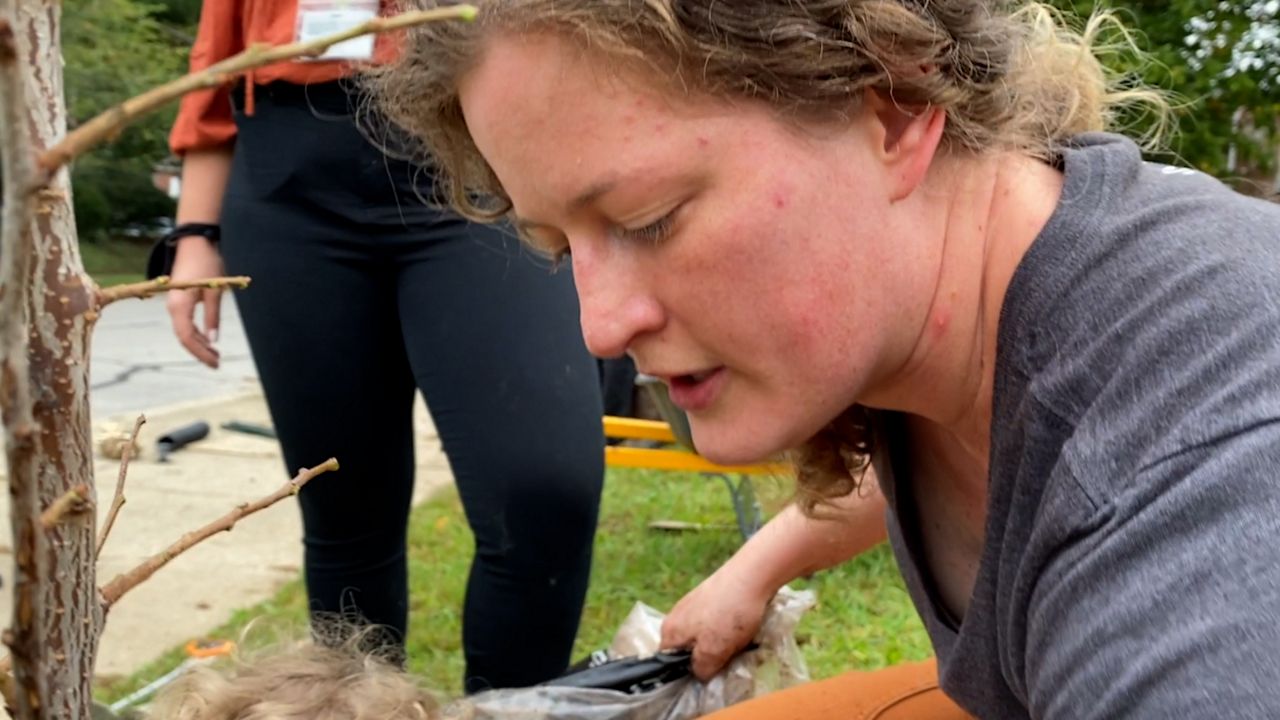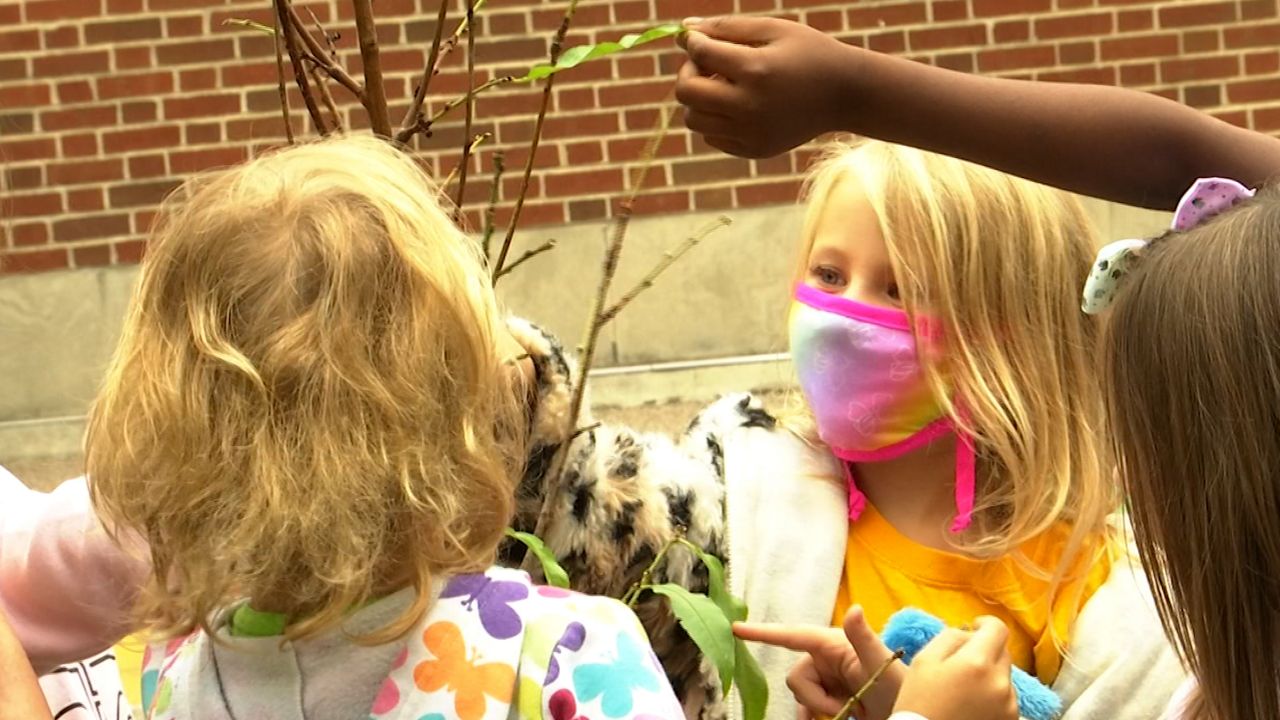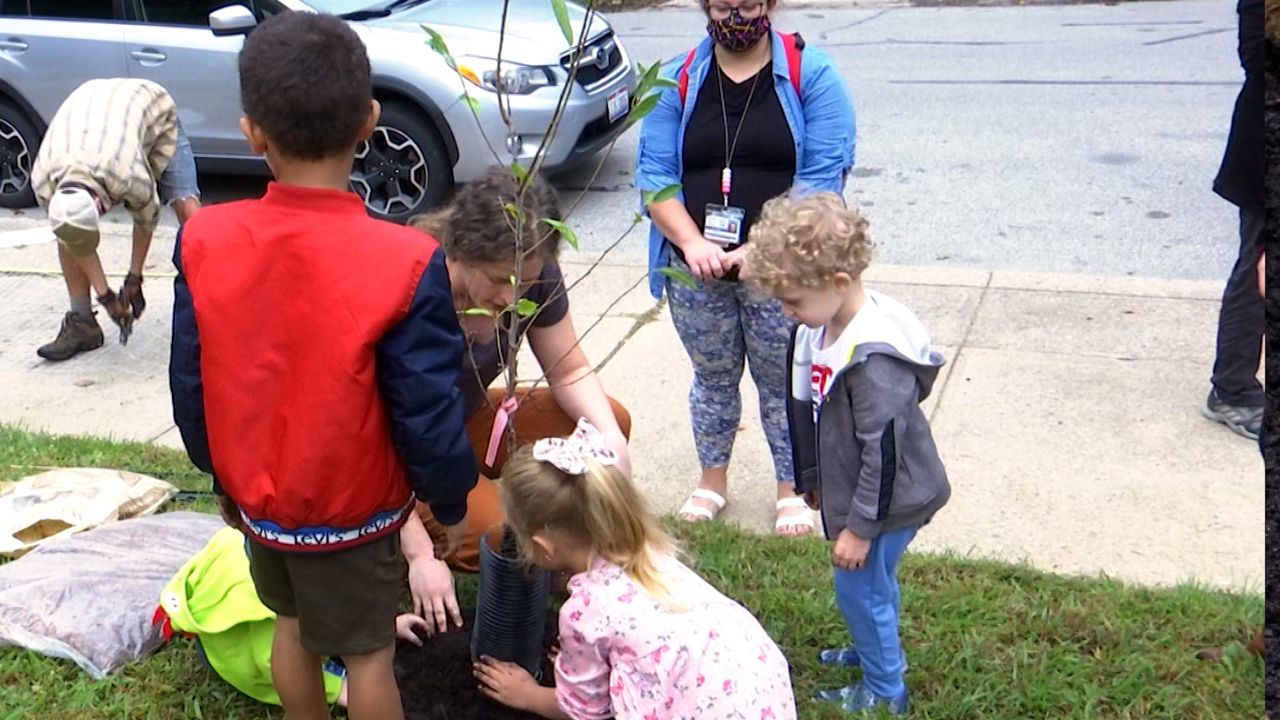CINCINNATI — With their hands full of dirt and a grin on their faces, Sayler Park School’s preschool and kindergarten classes were eager to play their part by planting a piece of their neighborhood’s future.
While the saplings are just taking root, this team of tiny gardeners is helping lay the groundwork to improve food access in their neighborhood. In a few years, these trees will grow to provide free fruit for the community.

One in four Cincinnati residents lives in a food desert, which means there’s limited access to healthy, fresh affordable food for miles, according to the Center for Closing the Health Gap.
As Cincinnati’s westernmost neighborhood, Sayler Park is one of them. Geographically cut off from the rest of the city by hills and the Ohio River, the neighborhood is a poor candidate for a full-service grocery store, but village council president Jen Langdon wanted to know if there was another way to bring affordable fruits and vegetables in the neighborhood.
“We have a lot of students at our school that experience food insecurity and in our neighborhood in Sayler Park in general,” she said.
As part of a collaboration between the Sayler Park Village Council, Produce Perks, and the Cincinnati Permaculture Institute, the neighborhood began to map out where locals can find fresh food in the neighborhood and how to bring in more.

Langdon said the first steps included working to expand the neighborhood's farmer’s market, create incentives to add more produce options at the local convenience store and plant an orchard at the school.
“To provide food for the students but also to provide a learning experience for their classrooms,” she said.
It’s part of Alan Wight’s philosophy of using the land you have to feed your community.
As the community and school forest garden liaison at the University of Cincinnati, Wight helps communities identify, grow and sustain edible plants in their neighborhoods.
“I’ve always wondered why the world isn’t a giant garden of Eden,” he said. “We know how to plant these food-bearing trees and we don’t.”
Wight said fruit trees like the plum, cherry and nectarine trees installed at Sayler Park school are a good start.
“Once they’re in and they’re established, they’re a lot easier to grow food than an annual vegetable garden for example, and these are being planted in the public space,” he said.
The hard part, Wight said is getting the saplings purchased and planted and figuring out who will take care of them until the trees are self-sustaining.

In this case, Giving Trees donated the funds so Sayler Park could buy the trees, Groundwork Ohio River Valley helped ensure they were properly planted and Sayler Park School will work to ensure they grow to bear fruit.
“This is a project-based learning school,” Langdon said. “So the teachers will incorporate the orchard into their science classes or math.”
The fruit they harvest will go home with students to help feed their families and any neighbors who want, can walk by and pick fruit of their own.
If the orchard proves successful, Langdon hopes the four trees outside Sayler Park School are just the beginning.
“We have hopes of installing more trees all over Sayler Park so more people have access to healthy food and can see it growing in the neighborhood,” she said.



